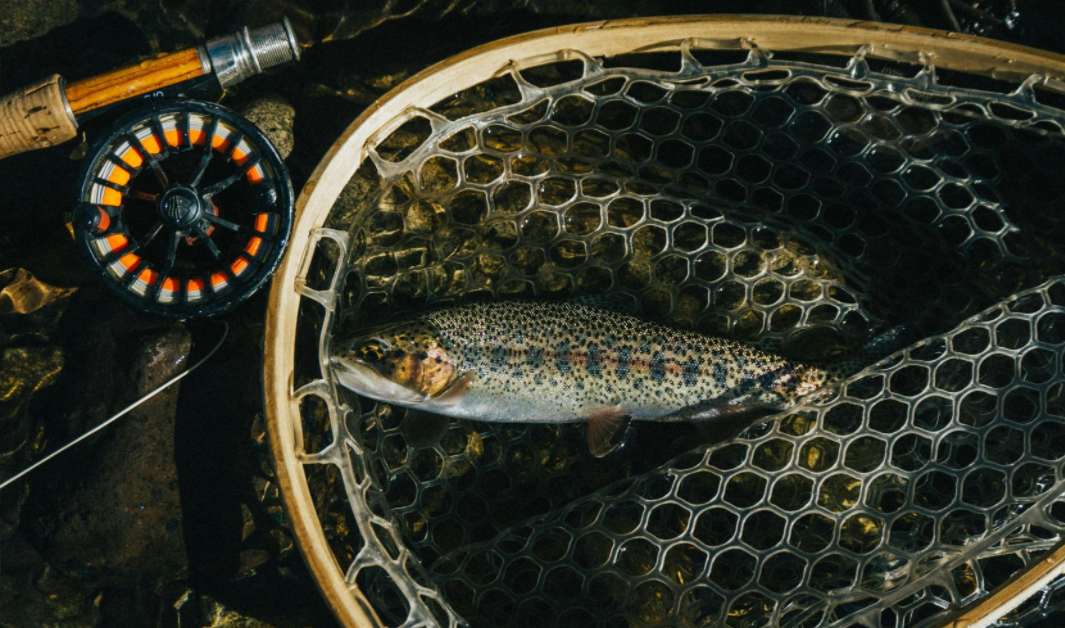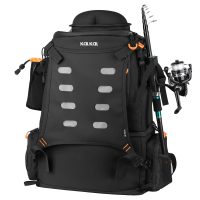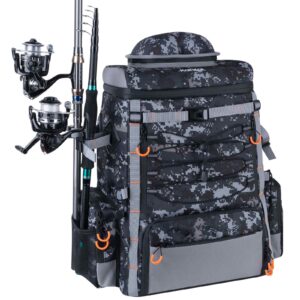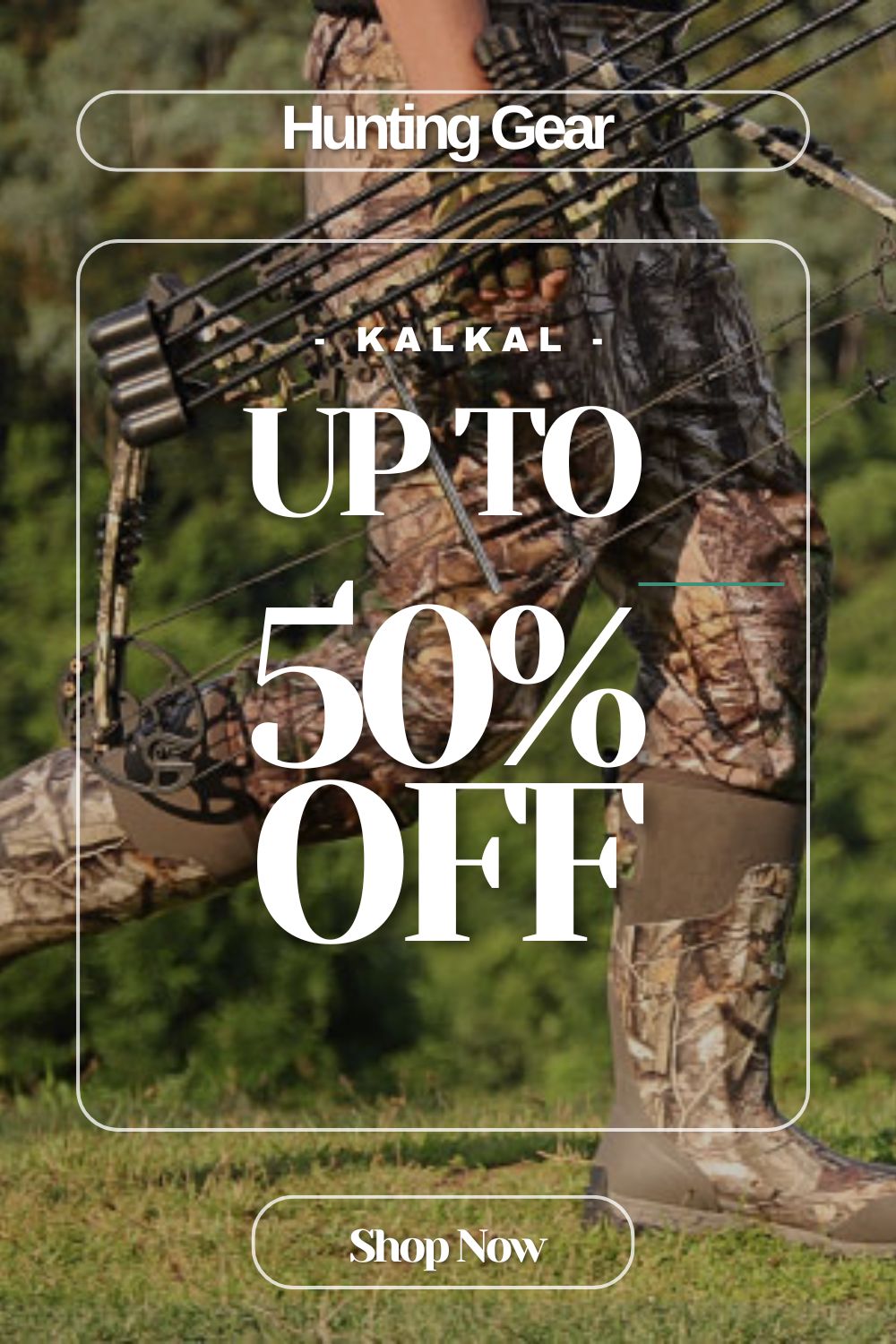Ever stood with a fly rod, cast crunch, all flies and the trout remains indifferent, totally unaffected by your effort. Get acquainted with the hook size because it may be a reason for your failure in trout fishing. This guide will demystify the issue of the hook size for trout and what hook to use in which circumstance of fishing.
We will be discussing sizing, types of hooks, a chart to help in selecting a hook, and other things to put into consideration when choosing a hook such as the type of trout fish and the techniques to be used when fishing. We will also find out which trout hook size is most appropriate to use when using the different baits to give the best presentation.
Are you ready for more trout on your hook, and master how to convert your near-catches into tremendous fish? Let’s get started!
Fishing Hook Size Basic
How Are The Fishing Hooks Measured?
In fishing, the size of the hook can play a significant role in determining your success. When you buy a fishing hook, have you ever wondered how these hooks are measured?
The size of fishing hooks is usually measured by the gap between the shank and the point, as well as their overall length.
Typically, the most crucial measurement is the gape as it dictates the bait size that the hook can effectively hold in place.
Hook sizes can seem a little confusing because they are labeled with different numbers.
What Are The Numbers That Define Hook Sizes?
To understand hook sizes, you need to know the system behind the numbers. When it comes to fishing hooks, sizes can span from #32 to #1. The larger the number, the smaller the hook(#32 hook is smaller than #1 hook).
However, when you reach the size of 1, the system switches, and each size increase is shown as a slash followed by a zero (e.g., #1/0, #2/0). The dimensions range from 1/0 to 19/0. In this case, the larger the number, the bigger the hook(#2/0 hook is bigger than #1/0 hook).
Do Different Hook Size Matter For Trout Fishing?
It must cross your mind if the size of the hook makes a difference when targeting certain fish such as trout. Definitely, it does.
Trout’s small mouths make it easy for them to detect a hook that is too big, leading them to reject the bait or lure. Likewise, if a small hook is used, there is a risk of the trout ingesting it, which could make it challenging to safely release the fish.
A useful tip is to make sure the hook size matches the size of the trout you are aiming for. In the later part, we will explain which size of hooks is better for different trout fishes.
Common Types Of Trout Fishing Hooks
Trout fishing hooks come in various shapes and sizes, each suited for specific presentations and targeting different trout behaviors. Here’s a breakdown of some common types of lure-and-hook setup:
1. Dry Fly Hooks (sizes #10 to #20)
These lightweight hooks are designed to float on the water’s surface, mimicking insects like grasshoppers, crickets, or mayflies that trout readily feed on. Their buoyant properties and fine wire gauges allow for natural presentation on the surface film, enticing trout to rise for a strike.
2. Nymphs Hooks(sizes #8 to #24)
Resembling aquatic insects in their underwater stages, nymphs feature heavier shanks and curved bodies to sink and wobble enticingly through the water column. They imitate creatures like stoneflies, mayfly nymphs, and caddisfly pupae that trout forage for near the bottom or mid-water depths. Hook sizes for nymphs can vary depending on the specific insect being imitated, with smaller sizes mimicking midge larvae or emerging mayflies, and larger sizes targeting bigger stonefly nymphs or crayfish.
3. Streamers Hooks(sizes #0 to #10)
Built to simulate baitfish or minnows, streamers are designed to attract aggressive trout with their lifelike swimming action. They feature weighted heads that help them sink to the desired depth and larger hooks to handle the strikes of bigger trout. Streamer sizes can range considerably, with smaller profiles suitable for imitating baitfish fry or sculpin. On the other hand, larger sizes mimic adult minnows or even small baitfish like smelt.
4. Wet Flies Hooks(sizes #8 to #18)
Designed to sink just below the water’s surface, wet flies imitate drowning insects or emerging nymphs that trout find irresistible. They bridge the gap between dry flies and nymphs, offering a subsurface presentation that can be particularly effective during hatches or when trout are feeding lower in the water column. Wet flies can come in various shapes and sizes, with some resembling winged insects just breaking the surface film, while others offer a more suggestive profile of a struggling or emerging insect.
5. Jig Hooks (sizes vary)
Featuring lead heads to sink quickly and keep the bait near the bottom, jig hooks are ideal for presentations where you want to get your bait down to the strike zone fast. They come in various sizes to accommodate different weights of jig heads and bait options. Lighter jigs with smaller hooks are suitable for finesse presentations with soft plastic baits or nymphs, while heavier jigs with larger hooks are better suited for deeper water, stronger currents, or targeting bigger fish with live bait like minnows.
Trout Hook&Lure Size Chart Reference
| Hook Size | Description |
| #10 – #14 | Dry Flies, Wet Flies |
| #8 – #12 | Nymphs, Streamers (Smaller) |
| #6 – #8 | Streamers (Medium) |
| #0 – #4 | Streamers (Large), Jig Heads |

What Size Hook Is Best For Trout?
While a “one size fits all” approach rarely works in fishing, there are sweet spots for hook sizes depending on the trout you’re targeting.
Trout species have varying mouth sizes, and using the right hook size ensures better hooksets, avoids injuring smaller fish, and increases your chances of landing that trophy catch.
Best Hook Sizes for Different Trout Species
- Rainbow Trout
Rainbow Trout are known for their aggressive feeding tendencies and can handle a wider range of hook sizes than their Brown and Brook Trout cousins. This allows for more flexibility in your tackle box.
For nymphs and dry flies, sizes #14 to #18 are ideal, offering a good balance between attractiveness and hook penetrating. Streamers can range from #6 to #10 depending on the size of the streamer and the aggressiveness of the fish you’re targeting.
If you’re going after monster Rainbows, you can push up to a #4 streamer, but remember that these larger profiles might spook smaller fish.
- Brown Trout
Typically more cautious than Rainbow Trout, Browns require slightly smaller hooks, especially for dry flies and nymphs, to achieve a more natural presentation that won’t spook these finicky feeders.
Opt for #16 to #20 hooks for nymphs and dry flies. When it comes to streamers, Browns can be surprisingly aggressive, so streamer sizes can range from #4 to #8.
However, if you’re targeting particularly pressured Brown Trout, err on the side of smaller streamers to entice them to strike.
- Brook Trout
The smallest of the common trout varieties, Brook Trout demands the most delicate hooks. Their diminutive size necessitates #18 to #22 hooks for nymphs and dry flies to ensure a clean presentation and effective hookset.
Streamer sizes should stay between #6 and #8 to avoid scaring off these easily spooked fish. Keep in mind that Brook Trout often inhabit smaller streams and rivers, so even smaller hook sizes might be necessary depending on the specific fishery you’re targeting.
Best Hook Sizes for Different Trout Fishing Methods
The fishing method plays a crucial role in determining the ideal hook size for your trout adventure. Here’s how different methods influence your choice
1. Fly Fishing
Since fly fishing relies on presenting flies that mimic insects or baitfish, hook size prioritizes natural presentation over brute force. Lighter hooks with finer wire gauges are preferred to ensure realistic movement and drift.
Typical sizes range from #10 to #22, depending on the specific fly pattern and targeted trout species (as discussed earlier).
2. Spinning Fishing
Spinning fishing offers more flexibility in hook size due to the wider variety of lures and bait presentations. When using live bait like worms or minnows, you want a hook size that allows the bait to move naturally.
This often means using slightly larger hooks (#6 to #10) compared to fly fishing. For lures like spinners or spoons, hook size is more about matching the lure’s size and weight.
Smaller lures for finesse presentations might use hooks in the #4 to #8 range, while larger, heavier lures for deeper water or faster currents might require #2 or even #1-sized hooks.
Besides these, the following are the additional considerations that you need to take:
- Jigs: Jig fishing utilizes weighted heads to sink baits quickly and keep them near the bottom. Jig hook sizes depend on the jig weight and bait size. Lighter jigs for smaller baits might use #8 to #12 hooks, while heavier jigs for larger baits or stronger currents could require #2 to #4 sized hooks.
- Treble Hooks: Some lures, like crankbaits or spoons, come equipped with treble hooks. While these can be effective for snagging fish, they also pose a higher risk of injuring the fish. Consider replacing treble hooks with single hooks of a similar size for a more ethical and potentially more effective approach, especially when targeting smaller trout.
Best Trout Hook Sizes for Different Baits
Trout are opportunistic feeders, and their menu can vary depending on the season, location, and available prey. Here’s a look at some common trout baits and the ideal hook size pairings:
Live Baits
● Worms
Nightcrawlers or smaller worms are a classic trout bait. Size #8 to #12 hooks provide a good balance between allowing the worm to wiggle naturally and offering a secure hookset. For nightcrawlers, consider using a bait threader to ensure the worm stays on the hook effectively and provides a more natural presentation.
● Minnows
Live minnows entice aggressive strikes, especially from larger trout. Opt for size #4 to #8 hooks, depending on the minnow size. When fishing with minnows, keep them lively and swim erratically to attract nearby trout.
● Grubs
These insect larvae are a tasty treat for trout, particularly brown trout. Use size #10 to #14 hooks to maintain a natural presentation. You can fish grubs under a bobber or jig them near the bottom where trout are likely to be searching for food.
Artificial Baits
● Spinners & Spoons
These metal lures come in various sizes and imitate baitfish or small insects. Smaller lures for clearer water or finesse presentations might use size #4 to #8 hooks, while larger, heavier lures for deeper water or faster currents could require #2 or even #1-sized hooks. When choosing a hook size for spinners and spoons, consider the weight of the lure as well. Lighter lures often require smaller hooks to maintain a balanced presentation in the water.
● Inline Spinners
These spinning lures with a single blade are excellent for imitating small baitfish. Size #4 to #6 hooks are a good starting point. Inline spinners are particularly effective in streams and rivers with moderate currents. Cast upstream and allow the lure to drift naturally with the current, mimicking a fleeing baitfish.
● Soft Plastics
Grubs, tubes, and other soft plastic baits offer incredible versatility, allowing you to mimic a variety of trout prey. Match the hook size to the bait profile. Smaller plastics like finesse worms or nymphs might use size #8 to #12 hooks, while larger profiles like creature baits or jerk baits could require size #4 to #6 hooks. When fishing soft plastics, experiment with different jigging techniques and retrieves to see what triggers strikes from the trout in your fishery.
Flies
We’ve already discussed fly sizes based on trout species, but here’s a quick recap:
- Dry Flies & Wet Flies:#14 to #20
- Nymphs:#8 to #24
- Streamers:#0 to #10
Remember: These are just recommendations. Experiment and see what works best in your local fishery.
Are Different Size Hooks Necessary For Different Baits?
Always consider the size of your bait when choosing a hook. The hook should be large enough to securely hold the bait but not so large that it hinders its natural movement. A larger hook can spook wary trout, so err on the side of a smaller hook whenever possible.
And, you should also regularly check and sharpen your hooks for optimal penetration and increased catch rates. Sharp hooks not only ensure a clean hookset but also help to minimize injury to the fish if you practice catch and release.
How To Choose The Right Hook For Trout?
Several factors influence your hook selection for trout fishing:
- Trout Species: Different trout species have varying mouth sizes. We have discussed the specific sizes for each type above.
- Fishing Method: Fly fishing requires lighter hooks for delicate presentations, while bait fishing might involve sturdier hooks.
- Water Conditions: Consider water clarity and flow rate. Clearer water calls for smaller hooks for a more natural look.
- Bait Size: Match the hook size to the bait you’re using for optimal presentation and effective hooking.
Conclusion
Since you already know the trout species, fishing techniques, and baits, you now know how to choose the right hook size. Always note that a natural presentation should be given preference over sheer power, especially when employing tiny hooks for fly fishing.
Select the hook size right for the bait size to make it effective and have well-set hooks. You should always try and always hone your hooks to get as many trout as you possibly can. With this knowledge, you are halfway to mastering the ability to catch the trout.




















Leave a reply